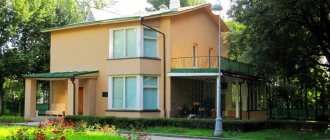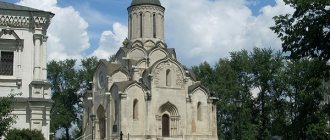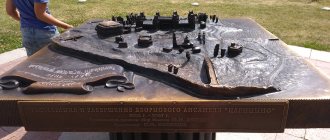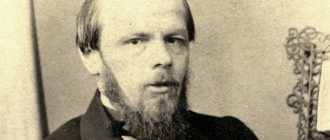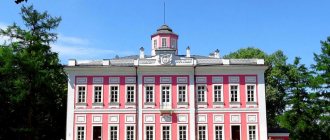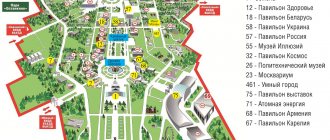The middle of the 20th century became for our country a time of technical breakthrough in the field of space exploration. It was then, or rather in the 50s, that the world's first artificial Earth satellite, called Sputnik-1, was launched.
In those years, the whole world witnessed how a pioneer in the field of space shipbuilding crossed the Earth's atmosphere and became its satellite in orbit. This event became significant also because the aircraft was built in a socialist country, which means it was several steps ahead of Western capitalist countries in this area.
Such an event could not pass unnoticed, and in the USSR it was decided to perpetuate the historical event with a monument - a symbol of our technical achievements and a global breakthrough in space exploration.
History of origin
The Soviet government announced a competition for the best designs for the monument, and many architects and designers, both domestic and from other countries of the world, took part in it.
From a huge number of applications, about 300 of the best were selected to be presented to a special commission and exhibited at the Manege complex. Only 3 works, in which the monument was depicted in the form of an object taking off, received the highest ratings.
The work of a group of architects and sculptors called “The Creator People” was awarded 1st place, followed by 2 more winners - an ensemble called “Three”, and a stele called “Red Star KEC”.
The original location was planned on Lenin Hills, now renamed Vorobyovy Gory, but the general appearance of the complex did not fit into the landscape and style of Lenin Hills, and it was proposed to install the monument on the territory of the Exhibition of Achievements of the National Economy, that is, VDNKh.
But despite the fact that the “People-Creator” project was chosen as the winner of the competition, it still had its shortcomings. So, in particular, there was no consensus among the authors of the project in what design the plume from the rocket soaring into the sky would be built. As a result of numerous options, a glass version was chosen, slightly darkened with a smoky color, leaving the opportunity to illuminate the stella from the inside with lamps at night.
This unusual and non-standard project was developed and carried out at the Research Center named after N.P. Melnikov, which is engaged in the design and research of metal structures, construction materials, and various alloys.
The famous Soviet scientist, design engineer, father of Soviet cosmonautics - Sergei Pavlovich Korolev took a direct part in the fate of the legendary monument. He came up with a great idea - to clad the stella from titanium slabs; this provided additional advantages, since titanium was not subject to corrosion, and also reflected the sky.
The entire composition as a whole was a true reflection of the very essence of the project, and gave scope for imagination and dreams to everyone who saw this stele. However, difficulties arose with the availability of titanium plates - the material was in short supply, and only with the participation of S.P. Korolev himself, titanium arrived uninterruptedly.
The base of the stele is quite impressive, and S.P. Korolev came up with the idea of creating a Museum of Cosmonautics in it, thus giving completeness to the entire complex. In the process of finalizing and creating the memorial structure, the height of the stele reached more than 100 meters, instead of the planned 50.
Korolev perceived the creation of the memorial complex as one of the most important events in the development of the life of the Soviet state; he took an active part in all aspects of the development and construction of the future complex, and according to the scientist’s wife, they took evening walks to the site of the monument’s construction.
The construction of the grandiose complex lasted 7 years, during these years the development of space exploration has stepped far forward - human-controlled ships have already been launched into Earth orbit. And in order to perpetuate this global event, it was decided to name the stele “Conquerors of Space”.
The structure as a whole was huge, weighing 250 tons. To simplify the installation of the complex, it was assembled on the ground, and already assembled, it was lifted onto the base using cranes.
And finally, in 1964, on October 4, exactly 7 years after the first satellite was placed in Earth orbit, the memorial complex was inaugurated.
Over the course of 3 years, the adjacent territory of the complex was turned into a park, with the now famous alley of “Heroes of Space”.
The alley had memorial significance - everything here was supposed to speak and remind of the first steps of the USSR in outer space, so sculptures and monuments were erected to all the pioneers of outer space, and of course, to spacecraft designers. Here you can see the legendary, world famous Yuri Gagarin. The first female cosmonaut Valentina Tereshkova, the commander of the first controlled flight - Vladimir Komarov.
Great scientists and researchers of that time in the field of space programs and space technology - Vsevolod Keldysh and Valentin Glushko - are immortalized on the alley. A special place here is occupied by the statue of S.P. Korolev himself, as the father of Soviet cosmonautics.
To commemorate the 20th anniversary of Yuri Gagarin’s first flight, on April 10, 1981, the long-planned Museum of Cosmonautics was opened at the base of the “Conquerors of Space” memorial complex.
In the first years of our century, the alley was reconstructed - new monuments were added, and a model of the Solar system was installed, consisting of the planets that were part of it, according to the latest data from the International Astronomical Union.
History of creation
The history of the museum began in the second half of the 20th century, when in 1964 the monument to the Conquerors of Space appeared on the map of Moscow. The titanium rocket at VDNKh became a symbol of a qualitative technological leap of its time. The launch of the first artificial Earth satellite, the first living beings and the first man in space became the starting point in world astronautics.
The idea to create a Memorial Museum of Cosmonautics belongs to the founder of Soviet rocket science, Sergei Korolev. The main mission of the museum was to popularize astronautics and preserve the scientific and technical heritage of the Russian space era.
The halls were located below ground level at a depth of five meters; initially its area was 3204 m². According to the artist O. Lomako, the halls should create the illusion of being in outer space.
The museum premises were decorated in various techniques using the most modern materials at that time. In the design of the main hall, the central place was occupied by a sculpture of an astronaut against the backdrop of a bright stained glass panel.
Twenty years after the opening, the premises fell into disrepair: leaks became more frequent, structures froze, and the cladding of the monument’s base was damaged. In 2006, it was decided to restore the museum, increase its area and update the exhibition.
Work on the museum took place simultaneously with the large-scale reconstruction of the Alley of Cosmonauts in 2006–2009, at the same time the monument to the Conquerors of Space was restored. The main goal of the museum's reconstruction was to transform it into an interactive space.
During the reconstruction, the museum was expanded to 8000 m², the exhibition area increased to 3720 m². By covering the space between the staircases at the main entrance, a new spacious lobby was created, there were four exhibition halls, and their areas were divided into nine thematic zones.
Exhibition items of the Museum of Cosmonautics in Moscow
After reconstruction, an educational center with a conference room, a library and a cafe were opened. A storage facility and technical premises were also created, a barrier-free environment was organized for visitors with limited mobility, and access to wireless Internet appeared.
The grand opening of the renovated museum took place on April 12, 2009. The new cinema hall was designed to resemble the cabin of a starship. In the new part of the museum, a branch of the Mission Control Center has appeared, on the screen of which the movement of the ISS is shown live and there are live communications with the astronauts.
Architectural design
In addition to its function, to perpetuate the achievements of the Soviet country in the development of space exploration, the complex was intended to carry an ideological meaning, which was expressed in the very structure of the structure. After all, the middle of the 20th century became a powerful leap forward in the field of technological progress, and a new area for humanity - the exploration of previously inaccessible spaces of space. And the very fact that the country was again ahead of the rest was expressed in the idea of executing the complex - an abstract solution to execution, as a challenge to everything that is already outdated.
The monument is made in the form of a rocket soaring to the unknown heights of space, leaving a trail behind it, and is installed on an impressive pedestal that can already accommodate the Museum of Cosmonautics, giving the complex as a whole completeness both architecturally and semantically.
The base itself is decorated on the outside with large-scale figures of people who took a direct part in the formation of space development. There was also a figure of S.P. Korolev, but it had to be removed, since the scientist did not consider himself worthy enough of such an honor. He argued that there were people who deserved this honor much more than him.
And the alley of “Heroes of Space” was replenished with a sculpture by Konstantin Tsiolkovsky, a former cosmonautics theorist, personifying the link from humanity to the vast expanses of space.
The image of the monumental complex was used more than once; coins of 10 kopecks were issued in the 60s of the 20th century, as a reflection of a significant date for the Soviet state - 50 years of Soviet power. And on anniversary rubles, in the year of the Olympics in Moscow - 1980.
Several times the image of the complex appeared in videos of some Western musical groups.
Halls and exhibitions
The tour opens with the introductory hall “History of the Universe”, followed by the halls “Morning of the Space Age”, “Creators of the Space Age”, “International Cooperation in Space” and “International Space Park”.
The walls of subsequent rooms are decorated with plaster bas-reliefs in the shape of constellations; the ceilings depict the planets of the solar system and a star map created by graffiti artists.
Among the exhibits are samples of rocket and space technology, personal belongings of astronauts and designers, archival documents and items of numismatics and philately. The museum owns a branch - the House-Museum of Academician Sergei Pavlovich Korolev on 1st Ostankinskaya Street.
In the first hall of the Museum of Cosmonautics there are models of several satellites, including the world's first Earth satellite, the first space station aimed towards Venus, a spinning spacesuit, as well as stuffed animals of the famous Belka and Strelka.
But my attention was drawn to the model of a marine satellite station. It is a ship with several satellite dishes. Intended to control artificial Earth satellites from the water surface.
Behind the first hall, right behind the large figure of the astronaut, there is a cinema, which always shows films and programs on space topics.
In the second room you can look at the original letters and notes of Tsiolkovsky and Korolev, various books related to astronautics, medals, the RD-214 engine from the first stage of the Cosmos launch vehicle. I really liked the exhibition of Korolev’s office.
In the third hall , the largest, on two floors, there are various launch vehicles with proud names: “Molniya”, “Sputnik”, “Soyuz”. I liked the Buran orbital ship. It was created as a competitor to the American shuttle, but for some reason, after making one flight, it never flew into space again.
It was interesting to look at the models of the launch complex of the Space Shuttle transport space system at the J. Kennedy Cosmodrome at Cape Canaveral in the USA and our Baikonur Cosmodrome in Kazakhstan.
The “Cosmonautics for Humanity” (or “Space for the National Economy”) zone is dedicated to the applied use of satellites and contains models of “Express-AM”, “Ekran-M”, “Meteor-3M”, “Resurs-DK1”, “GLONASS”.
Here is the Mission Control Center, the first lunar satellite, and the lunar rover itself - the official name is the automatic station Luna 16.
The section “Exploration of the Moon and Planets of the Solar System” reflects the history of flights to the Earth’s satellite and includes models of the automatic station and the return vehicle “Luna-16”, a model of the “Lunokhod-1” and the original control panel of the device, samples of the delivered soil.
The monitor hanging on the wall caught my attention. On it, by pressing the touch buttons, you can read about galaxies, their types, black holes, stars, planets of our solar system - what they are, when they were discovered and much more interesting things. This was the first floor of the last hall.
On the second floor you can see an exhibition of the astronauts who landed in the landing capsule. Moreover, the inscription on the sign said that the capsule was completely real, the astronauts landed in it in 1988.
The section “Space House in Orbit” shows household items of astronauts: an on-board refrigerator, an electric food heater, a special table for meals and “space” chess. Here are samples of space food: honey, cottage cheese, mustard, juice - all in tubes, as well as ordinary canned food.
It also presents models of manned spacecraft of the Soyuz series, the Salyut-6 orbital station, and the Sokol-K, Yastreb, and Orlan-D spacesuits.
Next, you can enter the base compartment of the Mir Space Station. There is a monitor, chairs, control panel, locker room and toilet here. There are many buttons scattered around the walls.
The “International Cooperation” section is dedicated to the interaction of states in the development of astronautics and demonstrates models of the Intercosmos-1 satellite, the Soyuz-37 spacecraft, and the Soyuz-19 APAS. Layout "Docking of the Soyuz-19 spacecraft - Apollo, International Space Station."
The logical continuation of this section is the “International Space Park” zone. It displays modern models of rockets and transport systems such as Soyuz, Proton and Buran.
After looking at the exhibits on display, I came to the conclusion that astronauts are truly heroes, each of whom needs a monument.
Copies of the complex
Two copied monuments are known, in reduced sizes.
One of them is installed in the homeland of Konstantin Tsiolkovsky, in the Kaluga region, the city of Borovsk. This version looked like an exact copy of the original, on a reduced scale, with a sculpture of Tsiolkovsky himself located nearby. In the 80s, the monument was repeatedly damaged by vandalism, and it was decided to demolish it. Much later, in 2007, the stele was erected, but in bronze.
The second reproduction of the complex was donated by the country of the Councils to the United Nations, and installed in Geneva, the headquarters of the UN.
The composition “Conquerors of Space” and the Museum of Cosmonautics are rightfully the most interesting memorial places in the capital of our homeland, Moscow, and allow us to carry through the centuries the memory and respect for the great founders and pioneers in the exploration of outer space.
